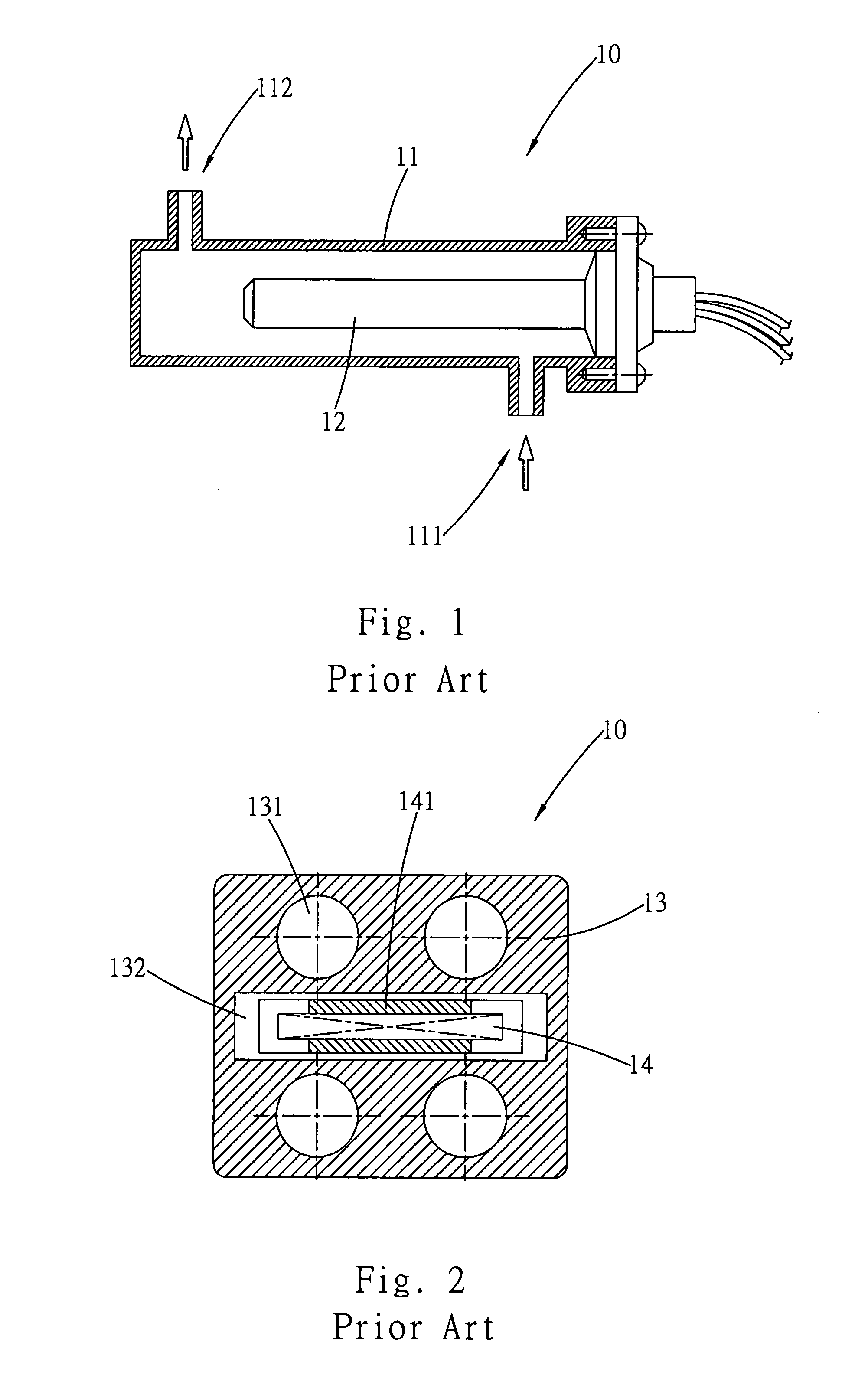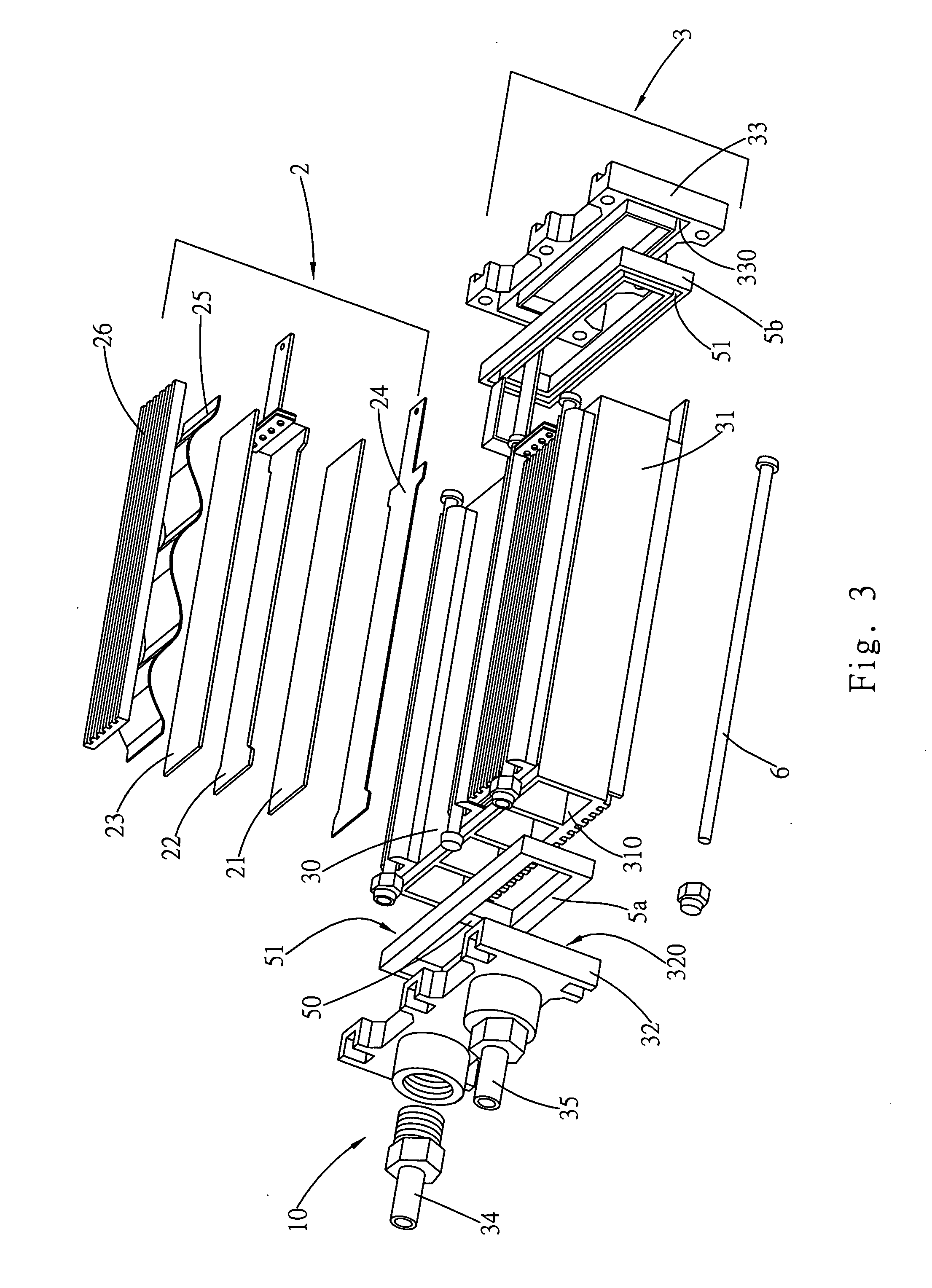Vehicular fluid heater
a heater and fluid technology, applied in vehicle cleaning, household stoves or ranges, lighting and heating apparatus, etc., can solve the problems of affecting the efficiency of heating, and difficult to implement leak-proof functions, so as to achieve effective and efficient heat transfer, improve efficiency and benefits
- Summary
- Abstract
- Description
- Claims
- Application Information
AI Technical Summary
Benefits of technology
Problems solved by technology
Method used
Image
Examples
Embodiment Construction
[0029]FIG. 3 shows a schematic view of a heating system 10 which is a heat exchanger 3 comprising a laminated heating composite 2 flatly jointed to a heat exchange vessel 31 of the heat exchanger 3. The laminated heating composite 2 conducts electricity to a heating strip 21 using plate electrodes 22 and 24. An external power switching mechanism can be utilized to control a power-on period for the heater strip 21. As the power switching mechanism is an ordinary manual or automatic switch, it will not be described further.
[0030]An insulating plate 23 with either a good or poor thermal conductivity, depending on specific applications, is used to provide electrical insulation for the laminated heating composite 2. The insulating plate 23 is positioned at an exterior side of the plate electrode 22 and an interior side of a sealing back plate 26.
[0031]The heating strip 21 can be fabricated from any single plate unit of electro-thermal materials such as an electric heating wire or a compo...
PUM
 Login to View More
Login to View More Abstract
Description
Claims
Application Information
 Login to View More
Login to View More - R&D
- Intellectual Property
- Life Sciences
- Materials
- Tech Scout
- Unparalleled Data Quality
- Higher Quality Content
- 60% Fewer Hallucinations
Browse by: Latest US Patents, China's latest patents, Technical Efficacy Thesaurus, Application Domain, Technology Topic, Popular Technical Reports.
© 2025 PatSnap. All rights reserved.Legal|Privacy policy|Modern Slavery Act Transparency Statement|Sitemap|About US| Contact US: help@patsnap.com



